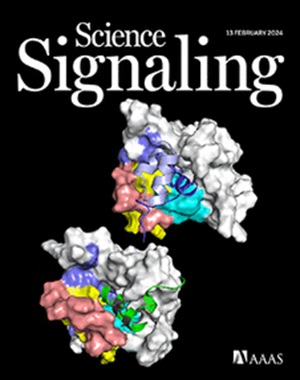Identification of proteins in semen-derived extracellular vesicles that bind to Tat and NF-κB and that may impair HIV replication
IF 6.6
1区 生物学
Q1 BIOCHEMISTRY & MOLECULAR BIOLOGY
引用次数: 0
Abstract
Replication of HIV-1 requires the coordinated action of host and viral transcription factors, most critically the viral transactivator Tat and the host nuclear factor κB (NF-κB). This activity is disrupted in infected cells that are cultured with extracellular vesicles (EVs) present in human semen, suggesting that they contain factors that could inform the development of new therapeutics. Here, we explored the contents of semen-derived EVs (SEVs) from uninfected donors and individuals with HIV-1 and identified host proteins that interacted with HIV Tat and the NF-κB subunit p65. Integrative network and pathway enrichment analyses of these complexes revealed associations with an array of biological functions regulating gene expression. Several proteins in SEVs bound to both Tat and NF-κB p65: the scaffolding and cell signaling regulatory protein AKAP9, the G protein signaling regulator ARHGEF28, the epigenetic reader BRD2, the small nuclear RNA processor INTS1, and the transcription elongation inhibitor NELFB. When complexed with p65, NELFB also interacted with HEXIM1, another transcription elongation inhibitor, suggesting that SEVs may inhibit HIV-1 propagation through multiple networks of transcriptional activation and repression. Exploring these data and the underlying mechanisms may inform the development of more effective or more durable therapeutics against HIV.
精液源性细胞外囊泡中与Tat和NF-κB结合并可能损害HIV复制的蛋白质的鉴定
HIV-1的复制需要宿主和病毒转录因子的协同作用,最关键的是病毒反激活因子Tat和宿主核因子κB (NF-κB)。在与人类精液中存在的细胞外囊泡(ev)培养的受感染细胞中,这种活性被破坏,这表明它们含有可能为新疗法的开发提供信息的因素。在这里,我们研究了来自未感染供体和HIV-1患者的精液源性ev (sev)的含量,并鉴定了与HIV Tat和NF-κB亚基p65相互作用的宿主蛋白。这些复合物的综合网络和通路富集分析揭示了与一系列调节基因表达的生物学功能的关联。sev中与Tat和NF-κB p65结合的蛋白包括:支架和细胞信号调节蛋白AKAP9、G蛋白信号调节蛋白ARHGEF28、表观遗传读取器BRD2、小核RNA处理器INTS1和转录延伸抑制剂NELFB。当与p65结合时,NELFB还与另一种转录延伸抑制剂HEXIM1相互作用,这表明sev可能通过多个转录激活和抑制网络抑制HIV-1的传播。探索这些数据和潜在机制可能为开发更有效或更持久的艾滋病毒治疗方法提供信息。
本文章由计算机程序翻译,如有差异,请以英文原文为准。
求助全文
约1分钟内获得全文
求助全文
来源期刊

Science Signaling
BIOCHEMISTRY & MOLECULAR BIOLOGY-CELL BIOLOGY
CiteScore
9.50
自引率
0.00%
发文量
148
审稿时长
3-8 weeks
期刊介绍:
"Science Signaling" is a reputable, peer-reviewed journal dedicated to the exploration of cell communication mechanisms, offering a comprehensive view of the intricate processes that govern cellular regulation. This journal, published weekly online by the American Association for the Advancement of Science (AAAS), is a go-to resource for the latest research in cell signaling and its various facets.
The journal's scope encompasses a broad range of topics, including the study of signaling networks, synthetic biology, systems biology, and the application of these findings in drug discovery. It also delves into the computational and modeling aspects of regulatory pathways, providing insights into how cells communicate and respond to their environment.
In addition to publishing full-length articles that report on groundbreaking research, "Science Signaling" also features reviews that synthesize current knowledge in the field, focus articles that highlight specific areas of interest, and editor-written highlights that draw attention to particularly significant studies. This mix of content ensures that the journal serves as a valuable resource for both researchers and professionals looking to stay abreast of the latest advancements in cell communication science.
 求助内容:
求助内容: 应助结果提醒方式:
应助结果提醒方式:


